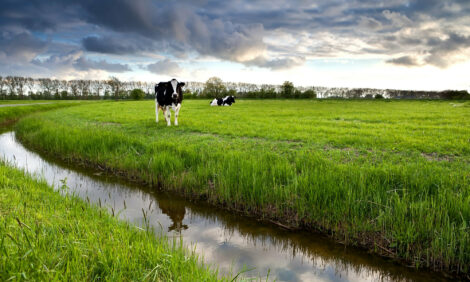



The Nitrates and Phosphorous Regulations
IRELAND - The Ulster Farmers’ Union and the Department of Agriculture and Rural Development (DARD) are urging farmers and landlords to ensure their farm records are up to date. The UFU and DARD comments were made as Cross Compliance inspections commence on local farms.UFU President Graham Furey said; “We are encouraging farmers and landlords to make themselves aware of the details of the Nitrates and Phosphorous Regulations. They should make sure their 2007 nitrates and phosphorous records are complete so that they are fully prepared for a farm inspection if selected. Most of these records are already available on farm and keeping records up to date will help avoid a Single Farm Payment penalty on this aspect of Cross Compliance”.
Dr. Sam Kennedy, Deputy Director of CAFRE, who heads up a cross-compliance team in DARD commented: “We have used a wide range of methods to help farmers comply, including workshops, training courses and numerous press articles. Indeed recently we issued two newsletters setting out the requirements of cross-compliance and single farm payment. Our aim is to assist industry compliance.”
Records for 2007 relating to farm use of nitrates and phosphates should have been ready by 30 June 2008 for possible inspection.
The Northern Ireland Environment Agency (NIEA) formerly Environment and Heritage Service, as the authority responsible for inspection, will use the records to partly assess farm compliance with the Regulations. From 2007 all farms must keep annual records for the period 1 January to 31 December. They must be ready for any possible inspection by the 30 June of the following year and be retained for a period of 5 years.
The table below shows, for a typical farm, the records required and the recommended sources of the information.
| Records required | Recommended sources |
|---|---|
| Agricultural area, size and location of fields and crops | IACS form or DARD farm map |
| Land control | If not the land owner or SFP claimant a written controller agreement between both parties must be available. Evidence of the right to graze common land. |
| Livestock numbers, species, type and time on farm | DARD herd or flock register or other records of animal numbers, species, types and length of time on farm (see reference to Guidance Booklet below) |
| Amount, type and date of manure imported/exported; name and address of providers/recipients/transporters (if different) | Note; this includes livestock manures moving on or off-farm Recorded as per Guidance Booklet (see below) Declaration of N content, waste transfer note and exemption, where appropriate |
| Livestock manure - storage | Capacity – tank dimensions. Rental agreement for additional storage, contractual agreement with processing facilities or evidence of access to an approved treatment or recovery outlet, where appropriate Livestock numbers, types and length of time housed, bedded or out-wintered (location of land used to out-winter) where appropriate. Details of slurry separation where appropriate. An approved FNMS application. |
| Fertiliser | Tonnages and N contents of stocks on 1 January and 31 December of the same year. Tonnages and N content of fertiliser bought and sold and imported and exported throughout the year eg dated invoices or receipts |
| Soil nitrogen supply index for non-grass crops | Previous crop grown and soil type |
| Chemical P applications | IACS form or DARD farm map showing where P was applied and corresponding accredited soil analysis results showing P requirement Crop type, fertiliser type, P content, quantity and date applied |
TheCattleSite News Desk


